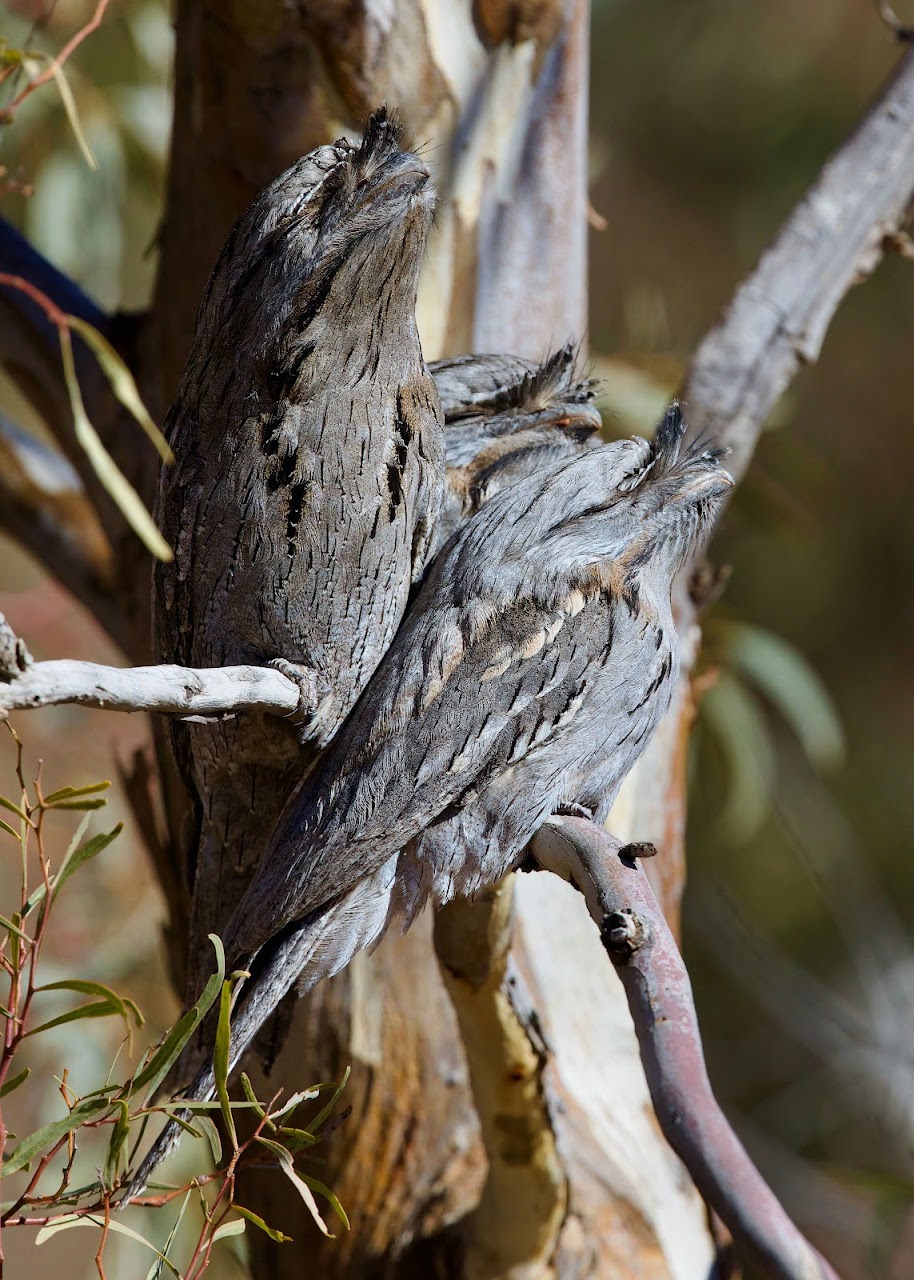Tawny Frogmouths are our most often encountered and reported terrestrial nocturnal bird species (1). The reason they are so often found is they often roost during the day in plain sight, relying on their brilliant feather colouring to blend in but also on their “dead branch” imitation while perching very still with eyes closed (2).
As Frogmouths present no threat to other bird species, they are left to roost in peace, whereas predatory owl species must hide away to avoid being mercilessly harassed by birds they may prey on, making them much harder to find by day when most of us are out birding.
Recently at the Broken Hill Desert Park we were asked by a lady if we would like to see something very special. Of course we said we would and were then shown three Tawny Frogmouths roosting together in the open on a branch about head height beside picnic facilities. It was great to see her excitement and clear delight in seeing these beautiful birds, eyes shut and motionless, on their perch bathing in full morning sunlight after a very cold night.
As I took a few photos I thought this is a family group – mum, dad and a young one.
NOTE: You can left click on any photo to open a slide show of the photos free of text or a right click enables one photo at a time to be opened in a New Tab where an enlarged version can be viewed.
However on checking the photos on the laptop later and verifying their sex after consulting field guides, it was clear the trio were all females as shown by the brown colour of some feathers. The males are all grey with no brown colouring. So this family group comprised mum, seen as the larger bird at the rear, and two advanced female young, which in the photos look smaller and are not perched in the head up dead branch stance so common in adult birds.
The following photos show there is not much action to capture when photographing roosting Frogmouths, their movements are slow and minimal.
Photo cropped for a close view of one of the young birds showing the extravagant rictal bristles and feather detail which provides camouflage by replicating dead wood.
NOTES
(1) It is claimed the Tawny Frogmouth is our most frequently encountered nocturnal bird. A check of Birdata sighting records on 16/07/2025 confirms this: Tawny Frogmouth (62,141), Southern Boobook (46,633), Owlet Nightjar (25,501), Powerful Owl (18,987), Eastern Barn Owl (9,635), Barking Owl (7,402). All the other nocturnal terrestrial species have much lower reporting rates.
(2) The following quote from Michael Morcombe’s excellent Guide to the Birds of Australia is a good description of Frogmouths: “Probably the best known Australian nocturnal bird; occasionally seen in camouflage pose on an exposed limb, stiffly posed to mimic a broken branch. The streaked and mottled plumage looks like old wood or bark, the bill and bristles like the jagged end of a broken branch, and the untidy white spots and dark streaks are like lichens and sap stains on old timber. Yellow eyes look through narrowed slits; the head turns almost imperceptibly to follow an intruder’s movements.”
Sadly Michael passed away recently.





No comments:
Post a Comment